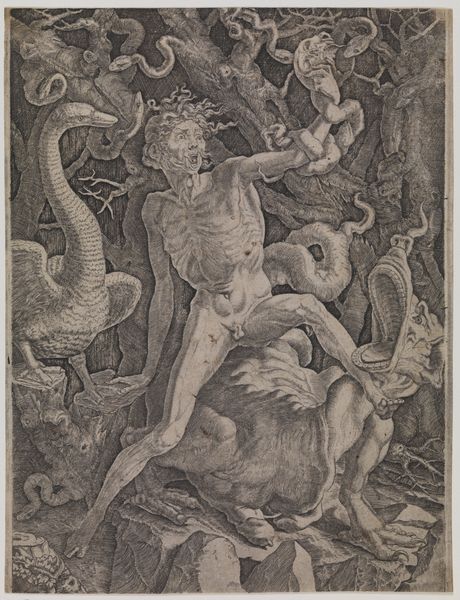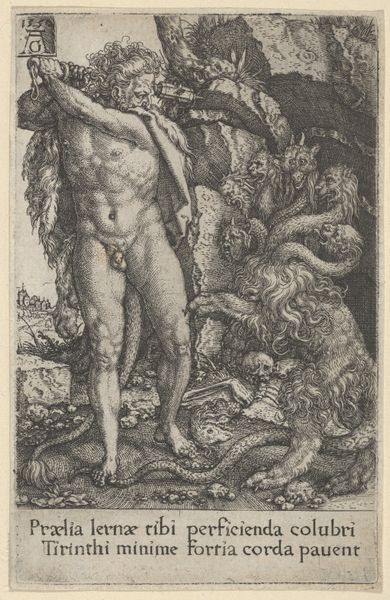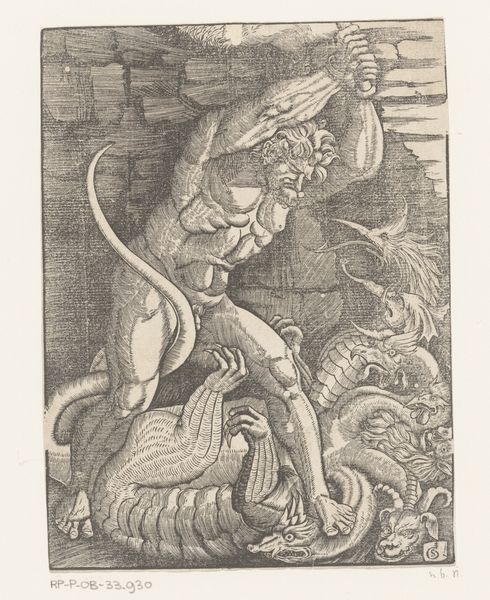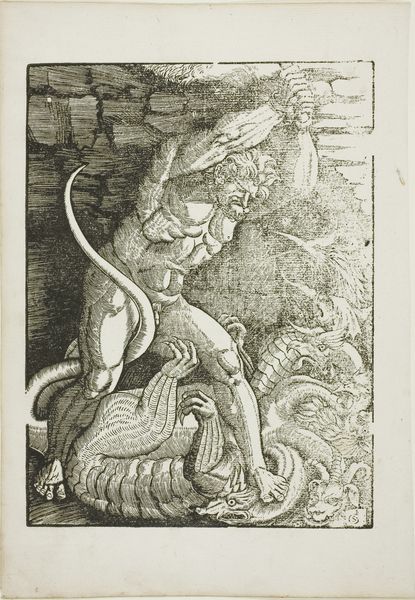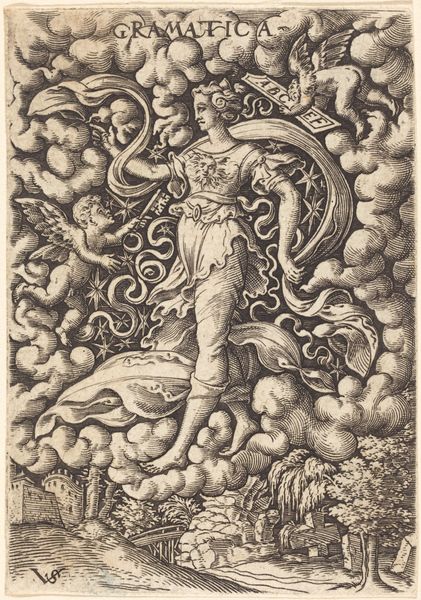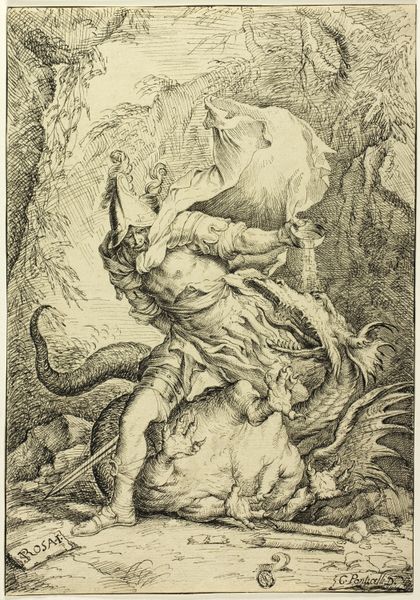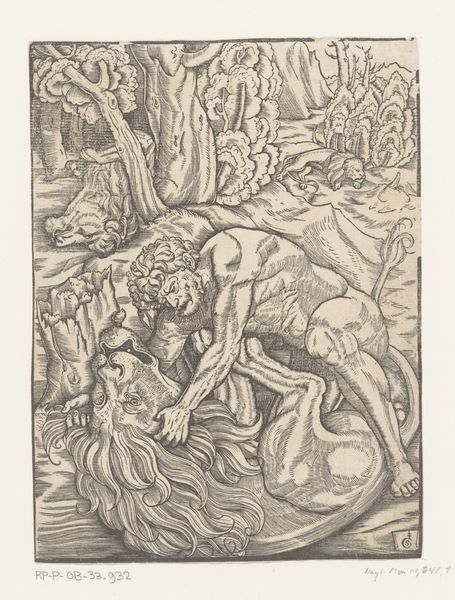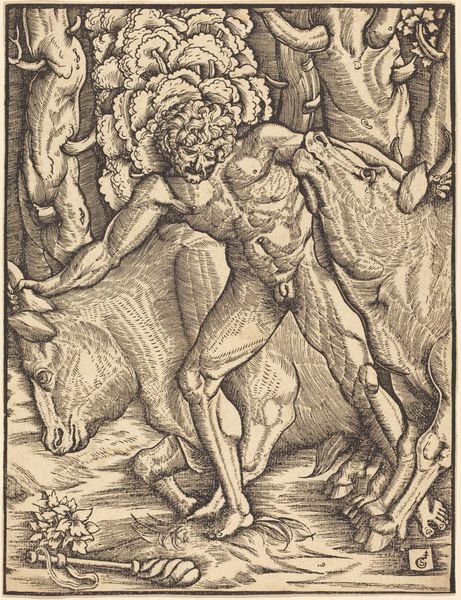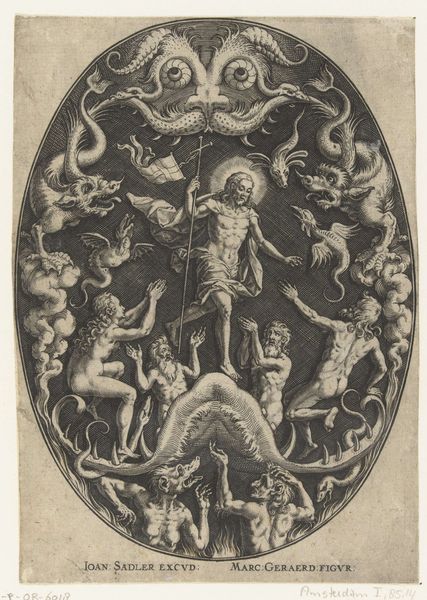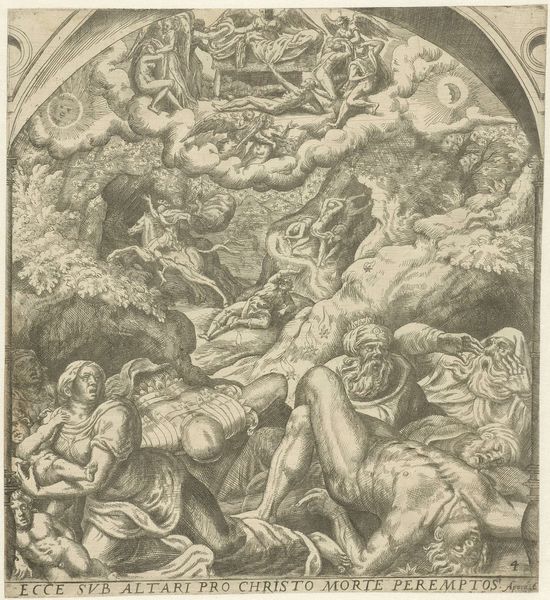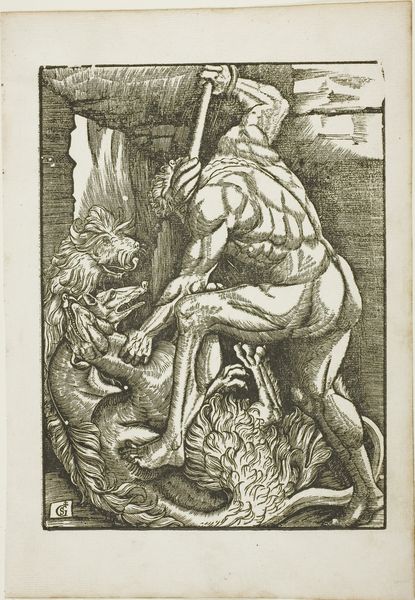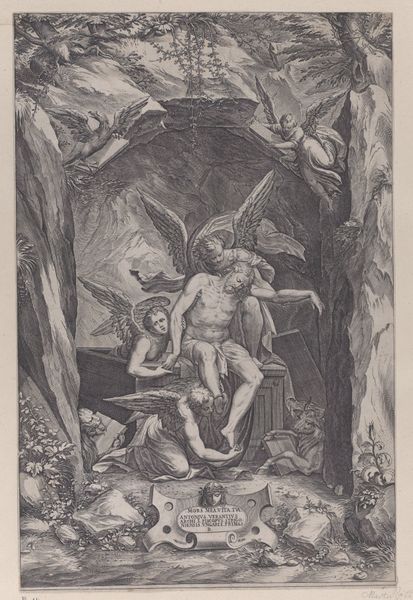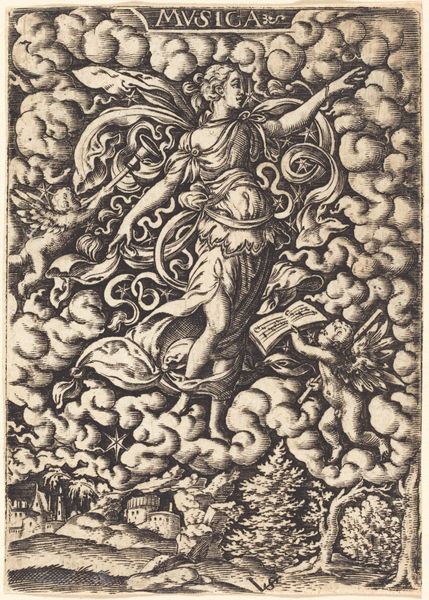
Fury personified as an emaciated man astride a monster, holding a skull in his raised left hand 1520s - 1530s
0:00
0:00
drawing, print, engraving
#
drawing
#
allegory
# print
#
mannerism
#
figuration
#
history-painting
#
nude
#
engraving
Dimensions: Sheet: 9 5/16 × 7 in. (23.6 × 17.8 cm)
Copyright: Public Domain
Editor: Here we have "Fury personified as an emaciated man astride a monster, holding a skull in his raised left hand" by Giovanni Jacopo Caraglio, made in the 1520s or 30s. It's an engraving. It's hard not to be struck by how disturbing this image is. What can you tell us about this work? Curator: This is a powerful depiction of "Fury" tapping into deep-seated anxieties of the period. Look at the skull – it isn't just a symbol of death; in Renaissance iconography, it's a *memento mori*, a reminder of our mortality. Consider how the emaciated figure contrasts with the grotesque but muscular monster he rides. What do you make of that contrast? Editor: It's quite striking. The emaciated man seems almost vulnerable, but he wields power over this beast. Almost like reason, or lack thereof, conquering raw emotion. Curator: Precisely. The artist draws on classical allegories to represent complex human states and societal anxieties. The serpents, symbols of chaos and temptation, entwine throughout. What kind of "fury" do you imagine the artist is trying to convey through these specific symbols? Editor: I guess it could be something beyond just anger, more like societal breakdown. Is it also fair to read these types of works in light of period conflicts? Curator: Absolutely. The Mannerist style with its distortions reflects the unease of the time. Remember that during the Renaissance, artistic depictions are not merely aesthetic exercises. They act as cultural mirrors reflecting concerns about morality, order, and human nature itself. We are still reckoning with some of those issues. Editor: It’s fascinating how many layers there are. This makes me think about the connection between psychological turmoil and societal chaos, things that have been depicted in art since, well, the Renaissance at least. Curator: Indeed, Caraglio's "Fury" offers a potent glimpse into the past, inviting us to contemplate timeless themes of destruction and the human condition. It has certainly made me consider these things again.
Comments
No comments
Be the first to comment and join the conversation on the ultimate creative platform.
